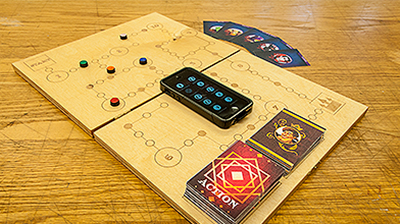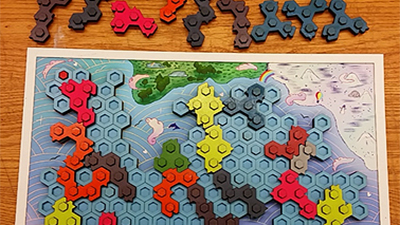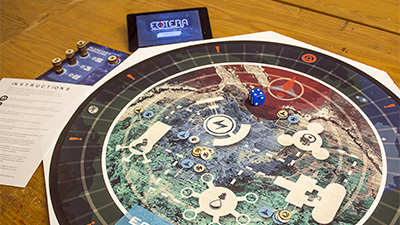It’s Sustainability – Gamified


Learning through play isn’t just for babies and toddlers.
According to College of Design assistant professor Emil Polyak, games are a good way for older children and adults to learn, too. That’s why Polyak recently challenged students in his Art and Design Studio to create educational games about sustainability.
After attending a workshop co-hosted by NC State’s Office of Faculty Development and the University Sustainability Office, Polyak wanted to broaden his students’ understanding of sustainability as an issue impacting the environment, economy and society.
He divided students in his Fall 2016 course into four teams and assigned each group an age range: ages 6-9, 9-12, 12-15 and 15-18. For five weeks, students learned about sustainability, researched child development and designed game mechanics and aesthetics.
“The real world needs innovation and new things. In this area, games have huge demand,” Polyak said. “You need to figure out the basics of play, why people play and what you need to do in that environment to engage a player.”

In Critter Crossings, students challenge 6- to 9-year-olds to use nature-based character cards and multi-dimensional game pieces as they cooperatively build a bridge. Student designers of Sci Fi-themed Planet Mizbee ask 9- to 12-year-olds to design a sustainable society on a newly-discovered planet.
“We defined sustainability by what would be best for a new settlement and its environment in the long run,” said student and Planet Mizbee team member Emily Parker. “That means practices that cultivate the environment, economy and equity of the society are what cause the society to be sustainable ‒ not just cultivating the environment.”
Villains No More takes 12- to 15-year-olds on a medieval journey to flee disasters and setbacks, and Eotera challenges 15- to 18-year-olds to navigate resource shortages on an imaginary planet.
“Gamification is about encouraging the player to come back, do it again and get better at it. That’s why we play games, we want to master something,” Polyak said.

In addition to board games, student designers also created electronic components that allow teachers to update the games based on current sustainability issues or events.
“This can be a game that you can play for a couple days or a couple weeks – not just for 40 minutes,” Polyak said.
Already, the course project has been presented at the NC State Teaching and Learning Symposium, as well as the International Conference on Education and New Learning Technologies in Spain.